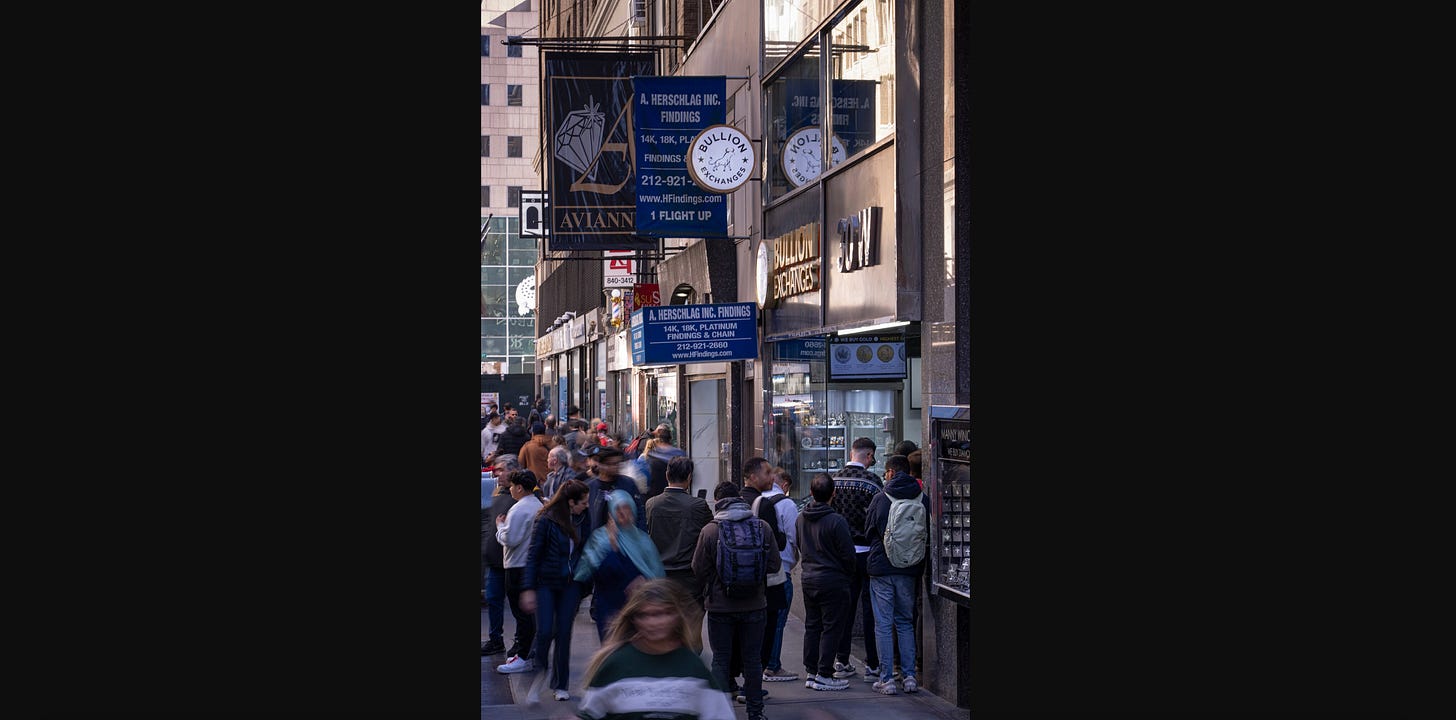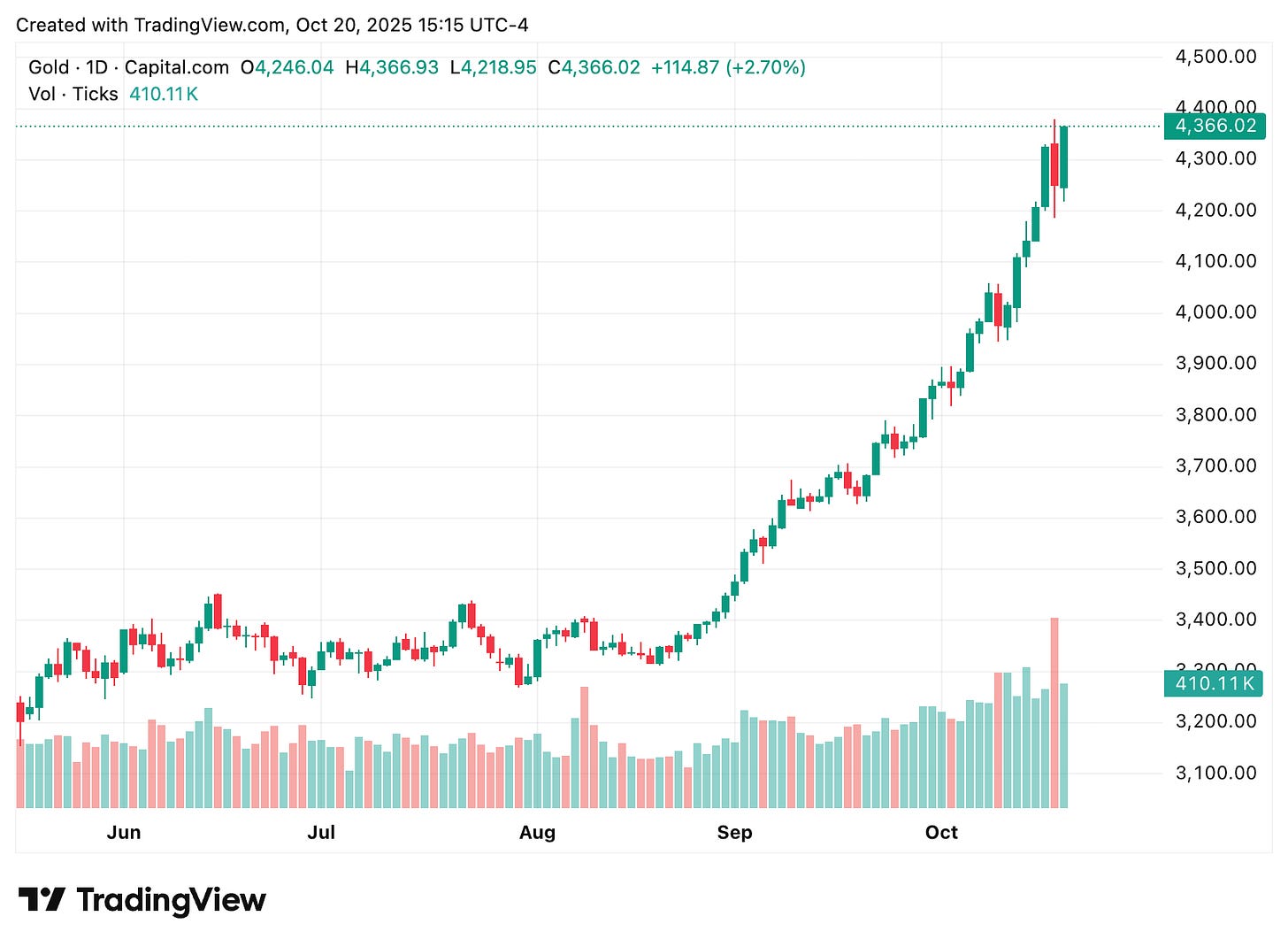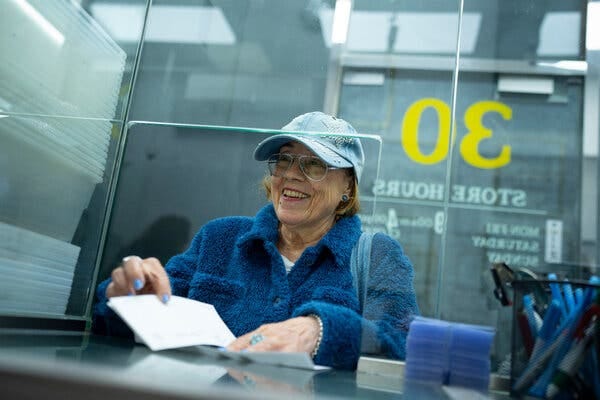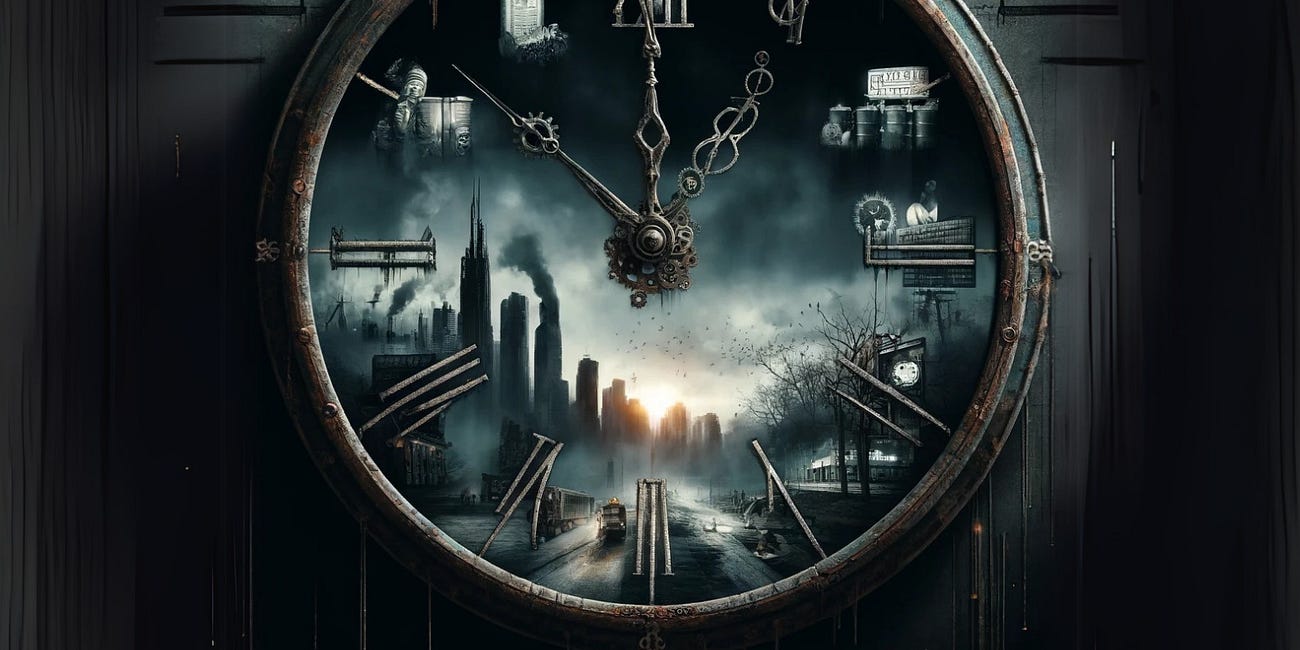The quiet panic on West 47th Street
As gold prices soar, New Yorkers are lining up to sell their heirlooms. In doing so, they're revealing a deeper unease about what’s coming next.
If you’ve read our guide, The Collapse Clock: Seven Signs That Trouble Is Brewing, you may remember what the first sign is: not riots, or bank runs, or bread shortages.
It’s lines.
When people form lines, it’s always a signal worth watching.
Last week, The New York Times ran a story about a quiet gold rush unfolding in midtown Manhattan’s Diamond District. The reporter described people lining up in front of jewelry stores on West 47th Street — not to buy jewelry, but to sell it. They’re trading in wedding rings, charm bracelets, old tie clips, and necklaces for instant cash, taking advantage of record-high gold prices.
Jennifer Tessler, pictured below, was thrilled to walk out with over $7,000, which she told the reporter she would use for an upcoming trip to Portugal. Maybe it’s a vacation or maybe it’s her exit strategy. The article isn’t explicit, unfortunately.
Perhaps people need quick money to pay bills. Maybe they sense the next phase of the storm and want liquidity before it hits. Maybe they’re just tired of holding onto symbols of stability when life no longer feels stable.
Beneath the stories of quick cash the real story is buried in plain sight: It’s the line that formed outside the shops.
People held heavy Trader Joe’s and Walmart bags. Some stood lopsided, the weight of the metals in their pockets tugging on them. Jewelers joined the line, hoping to unload items that had sat on their shelves for years without selling. One man walked into the shop, took the Rolex off his wrist and set it on the counter. Another opened a padded envelope and dumped out a bag of rings and necklaces.
When abstract concepts like fiat currency, fractional reserve banking, private equity, and “the system” writ large stop truly working for people, something inexplicable kicks off. Folks begin looking for something real, something tangible to protect themselves. But this New York Times article forces us to beg the question: is it different this time?
That’s because, when tangibles like gold start getting traded away for quick cash, and worse, that store of wealth is then exchanged for frivolity (such as a vacation or new car), could that be an indicator that most people do not truly grasp what’s happening?
Whenever trust begins to erode, lines start to form and regardless of what that line is for, it tells a story without saying a word. It’s the shape of anxiety, fear, delusion and greed made visible. And it’s your cue to take stock and dig deeper to understand the psychology of what’s happening.
Is collapse coming? Seven signs you can’t afford to ignore
Is something starting to feel off in your world? Like there’s a hum under the surface you can’t quite explain? If you’ve been sensing it, we’re here to tell you that you’re not crazy — and you’re not alone.
In April of 2025, we released the Collapse Clock guide for paid subscribers in order to lay out seven important signals the Collapse Life team identified as harbingers of impending trouble. We started with lines and added six more signals including things like cracks in supply, breakdowns in communication, surges in scapegoating, and several others.
Nevertheless, the first one is always the canary in the coal mine. When lines begin to form where they ordinarily don’t exist — at gold dealers, pawn shops, gas stations, border checkpoints, unemployment offices, passport renewal counters — it doesn’t really matter what people are waiting for. What matters is why they’re waiting.
When people stop believing the system will meet them halfway — when they’d rather have cash now than gold later — the clock has already started ticking.
And once lines start to form, history tells us they don’t shrink very easily.






What a fascinating perspective I'd never thought of, that "When people form lines, it’s always a signal worth watching." When you say a little later, "It’s the shape of anxiety, fear, delusion and greed made visible," it finally gave me a framing for a recent, hugely irksome thing wreaking havoc in central Amsterdam.
Here in the tangle of cobblestones, bridges, canals, bicycles, tulips and cheese, we suddenly have a new obstacle to contend with: TikTok lines. Young people lining up for blocks (and blocks and blocks) to sample the brownie / waffle / french fry sensation that in most cases opened for business last week. But not only do these mindless-idiot tourists clog the streets and footpaths with their zero tolerance for residents; after purchasing said snack(s), they then insist upon posing for and taking selfies. Middle of the street? No problem! While obstructing all other pedestrians and vehicles trying to pass? What's YOUR problem then, you old fart!
So, finally I know what to do, which is to chalk it all up to: anxiety, fear, delusion and GREED. Thank you!
Lovely substack. And the lines in one's mind too! Impatient for x to happen so that an absolutely critical y can be bought. But is it actually critical? And how much have you lost in the unproductive waiting, the desperate feeling of not having y, whilst forgetting to appreciate all that you already have that is actually meaningful in your life, and being grateful for it in the present?
I bought physical (in a vault) gold at $1250, it went up, and I thought I was a genius, then it started going down, and I sold it at $1250. Regrets, I have a few :) That said the funds went into buying shelter for my parents, in which I'm currently living as well. The moral of the story? Keep reading and watching Collapse Life, be real, and prepare accordingly. Then, without doubt, that light at the end of the tunnel is not the proverbial oncoming train, but actually a very promising light well worth walking and working towards.
My sincere apologies, I think someone hit me with a positivity stick today. Please don't worry, I'll revert to grumpy, raging at the world, momentarily.